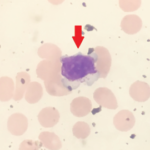Patients with pediatric systemic lupus erythematosus (SLE) also face a higher incidence of vertebral fracture risk, he said. In one study of 68 pediatric SLE patients, 56% of the participants had low or low normal spine areal BMD three years after diagnosis.
“Things don’t really get better after diagnosis in pediatric lupus,” he said. Cumulative effects of prednisone may lead to poor lumbar vertebral and trabecular strength. “It also seemed like the biggest decreases in bone mass were in those who developed lupus after puberty. Maybe these patients do not have as much potential to recover from initial losses experienced when disease activity and glucocorticoid therapy were maximal.”
Intervention Strategies
What can rheumatologists do to help young patients increase bone strength? Evidence does not support a strong endorsement for calcium supplementation in this population. Effects may be limited and not long lasting, he said. He recommends adequate calcium in his patients’ diet instead. Rheumatologists may supplement vitamin D, which is deficient in many pediatric lupus patients. The Endocrine Society guidelines recommend between 600 and 1,000 IU per day for an at-risk pediatric patient, with an upper limit of 4,000 IU per day to maintain a 25-hydroxyvitamin D level greater than 30 nanograms per milliliter.
Bisphosphonates, which are not FDA approved for pediatric patients, may help inhibit osteoclast function and bone resorption, but don’t hinder bone formation, Dr. Burnham said. Plan ahead for infusing these patients by checking serum creatinine, calcium and biomarkers of bone metabolism. Ensure that these patients do not need major dental work after infusion begins, and wait at least three weeks after invasive dental work to begin infusions, he said.
Most pediatric rheumatic disease patients will not have a fracture, but it’s important to have a strategy to lower their risk, Dr. Burnham said. Use steroid-sparing agents when possible. Maintain vitamin D levels, ensure dietary calcium intake and recommend physical activity. Patients with rapid weight gain after starting steroids are at greater risk for vertebral compression fractures.
“If you have a patient with bone fragility, you really want to collaborate with your endocrine colleagues,” Dr. Burnham said. Patients who are obese may need nutrition counseling or physical therapy to help them improve and lower their fracture risks.
Susan Bernstein is a freelance medical journalist based in Atlanta.
Second Chance
If you missed this session, it’s not too late. Catch it on SessionSelect.

